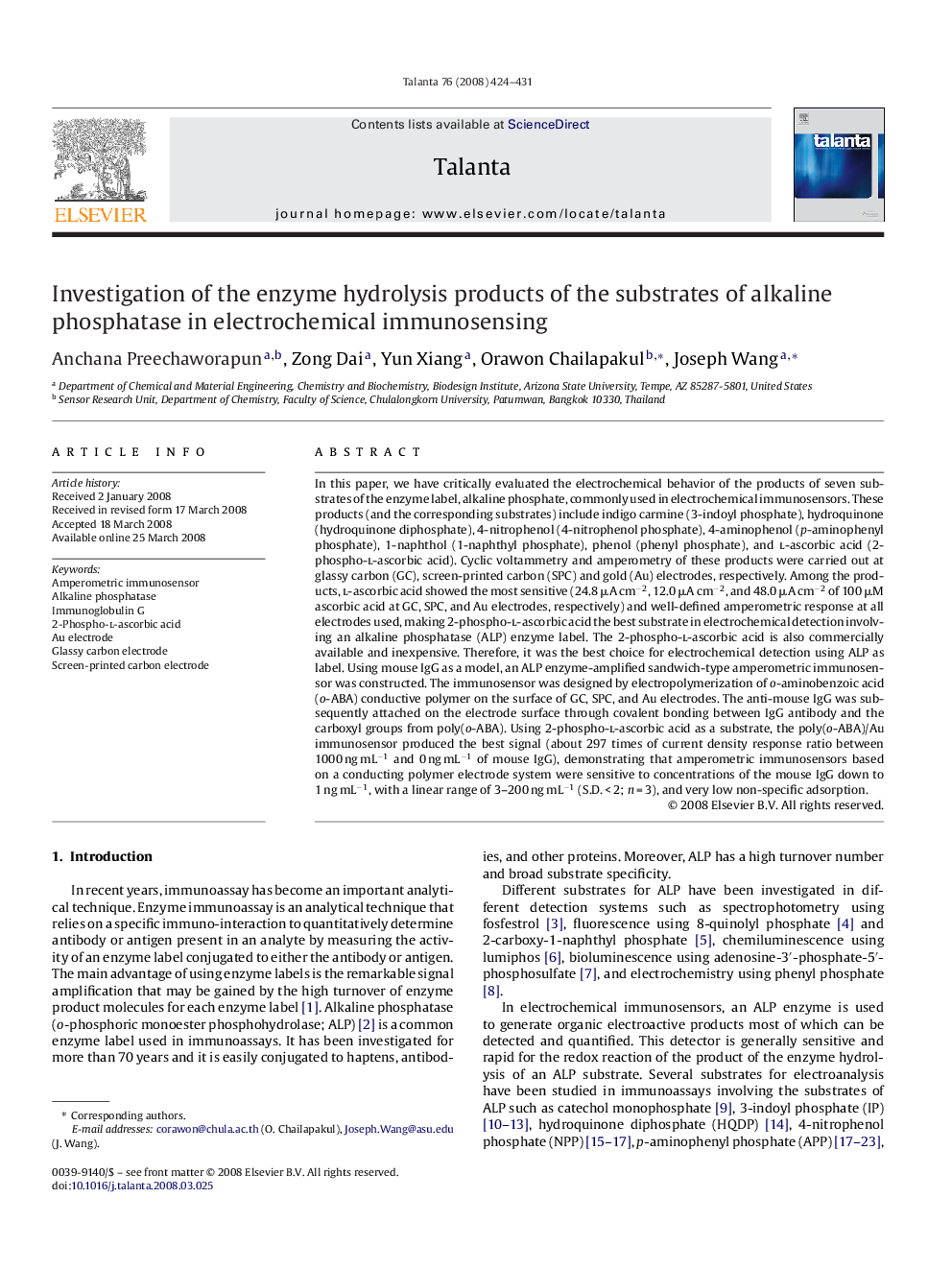| Article ID | Journal | Published Year | Pages | File Type |
|---|---|---|---|---|
| 1245409 | Talanta | 2008 | 8 Pages |
In this paper, we have critically evaluated the electrochemical behavior of the products of seven substrates of the enzyme label, alkaline phosphate, commonly used in electrochemical immunosensors. These products (and the corresponding substrates) include indigo carmine (3-indoyl phosphate), hydroquinone (hydroquinone diphosphate), 4-nitrophenol (4-nitrophenol phosphate), 4-aminophenol (p-aminophenyl phosphate), 1-naphthol (1-naphthyl phosphate), phenol (phenyl phosphate), and l-ascorbic acid (2-phospho-l-ascorbic acid). Cyclic voltammetry and amperometry of these products were carried out at glassy carbon (GC), screen-printed carbon (SPC) and gold (Au) electrodes, respectively. Among the products, l-ascorbic acid showed the most sensitive (24.8 μA cm−2, 12.0 μA cm−2, and 48.0 μA cm−2 of 100 μM ascorbic acid at GC, SPC, and Au electrodes, respectively) and well-defined amperometric response at all electrodes used, making 2-phospho-l-ascorbic acid the best substrate in electrochemical detection involving an alkaline phosphatase (ALP) enzyme label. The 2-phospho-l-ascorbic acid is also commercially available and inexpensive. Therefore, it was the best choice for electrochemical detection using ALP as label. Using mouse IgG as a model, an ALP enzyme-amplified sandwich-type amperometric immunosensor was constructed. The immunosensor was designed by electropolymerization of o-aminobenzoic acid (o-ABA) conductive polymer on the surface of GC, SPC, and Au electrodes. The anti-mouse IgG was subsequently attached on the electrode surface through covalent bonding between IgG antibody and the carboxyl groups from poly(o-ABA). Using 2-phospho-l-ascorbic acid as a substrate, the poly(o-ABA)/Au immunosensor produced the best signal (about 297 times of current density response ratio between 1000 ng mL−1 and 0 ng mL−1 of mouse IgG), demonstrating that amperometric immunosensors based on a conducting polymer electrode system were sensitive to concentrations of the mouse IgG down to 1 ng mL−1, with a linear range of 3–200 ng mL−1 (S.D. < 2; n = 3), and very low non-specific adsorption.
